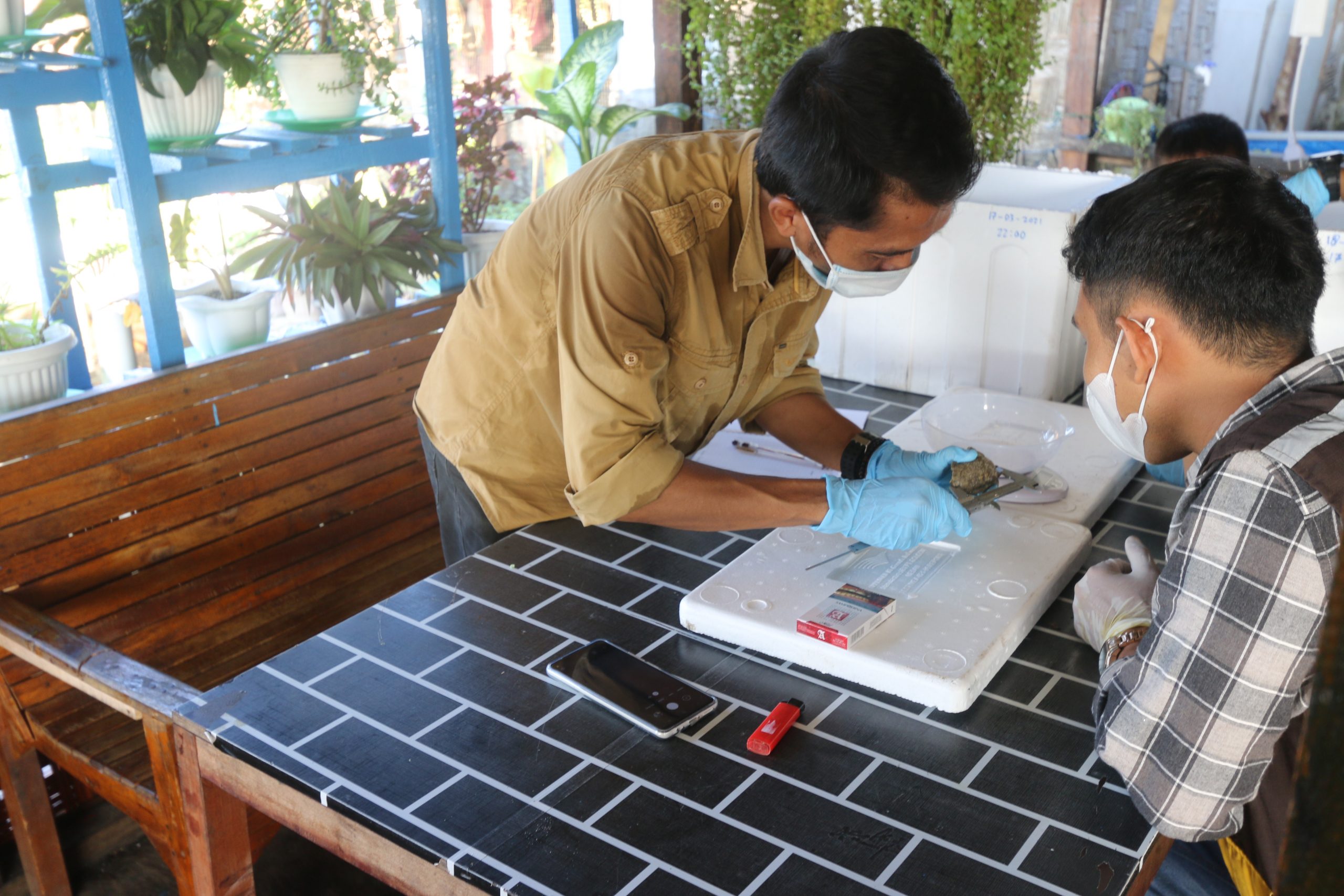Saving the Painted Terrapin from extinction – Satucita Foundation
Painted Terrapin Batagur borneoensis is ranked among the 25 most endangered tortoise and freshwater turtle species by the Turtle Survival Coalition. The terrapin, which is an unremarkable greyish brown colour for much of the year, lives up to its name during the breeding season when the males transform. Along with a lightening of the shell and head, a vibrant red stripe appears to be painted between its eyes, giving it a striking appearance.

The species was once found widely across Southeast Asia, but it’s distribution is now limited to the extreme southern peninsular Thailand, northeastern peninsular Malaysia, northern Sumatra and western Kalimantan in Indonesia and Brunei. Painted Terrapin, like so many chelonians all over the world, is valued for consumption of its meat and eggs, as well as for the pet trade. At the same time, its habitat is rapidly diminishing.
In northern Sumatra, a not for profit called the Satucita Foundation is working to save Painted Terrapin in Indonesia. At the helm of the organisation is Joko Guntoro, an Indonesian conservationist who was a Disney Conservation Hero in 2016 and is a member of the IUCN Tortoises and Freshwater Turtles Specialist Group. Led by Joko, Satucita is dedicated to conserving freshwater turtles, tortoises and terrapins, carrying out research, conservation education, head-starting and community-based activities.
Last year, Satucita was confirmed as one of the first recipients of an ASAP Species Conservation Grant. This project aimed to recover the population of Painted Terrapin in Karang Gading Langkat Timur Laut Wildlife Reserves. Despite being protected by regulations in Indonesia, the terrapin is still at risk from its eggs being collected by villagers for and also being eaten by wild boars and lizards. Hence, the foundation launched a project to collect and incubate eggs found during nest patrols and develop captive breeding in hopes of bringing the population numbers up.

With the help of the Natural Resources Conservation Agency (BKSDA) and local community members, the foundation conducted regular nest patrols at two sites in the wildlife reserve. Eggs, once found, were collected and carefully placed into an incubation facility until they hatch. Once they emerged, basic characteristics such as the size and weight of the hatchling was recorded to track growth in the long term. The hatchlings were then transferred into a head-starting pool that was built specifically to raise the hatchlings. From there, the hatchlings grow with the potential to be bred for future release.


Over the course of their project, the Satucita Foundation team managed to find 10 nests. Unfortunately, 5 of the nests were empty, with the eggs presumably eaten by wild boars or lizards. From the remaining nests 75 eggs were collected, with 47 of those hatching – a promising rate of 64%. These healthy hatchlings have since been transferred to the head-starting pool to be cared for.
“The ASAP grant helped us to expand our efforts to save Painted Terrapin in Langkat, North Sumatera. Thanks to nest patrols supported by ASAP, there are currently 47 hatchlings being raised. This is critical for long-term survival of the species. Partnerships like ours with ASAP are important for recovering the wild population of this Critically Endangered species in this area.” said Joko.

In addition to supporting the recovery of Painted Terrapin populations, the foundation also worked to raise awareness of the species through local community education. By involving the local community, the foundation has the opportunity to garner appreciation for and drive the community towards the conservation of the species. As part of their conservation strategy, head-starting and outreach programmes are conducted as soon as the hatchlings are moved to the raising pool. Members from the local community now participate in the nest patrols and out of the five nests found, three were handed over to the team by local fishermen.
Despite the challenges faced, including unpredictable weather conditions and a delay in finishing the head-starting pool, the team persevered with rewarding results. Moving forward, the foundation aims to expand its captive breeding efforts by doing a genetic mapping study of all Painted Terrapin populations across Indonesia. They also plan to strengthen and expand their outreach programme and include other freshwater turtles and tortoises.

